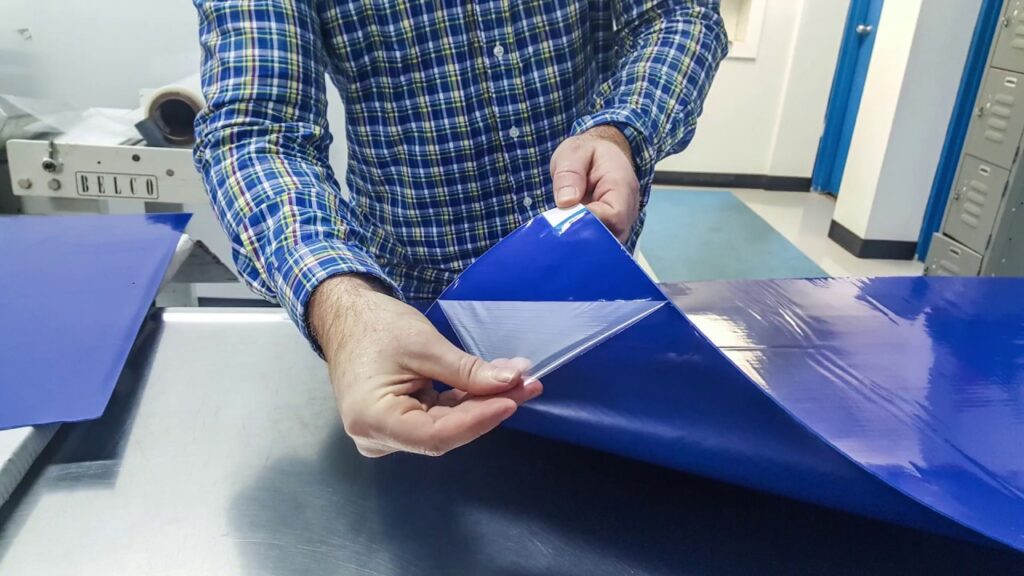# Demystifying Sticky Mats: Comprehensive Guide and FAQs
Cleanliness and hygiene are paramount in various environments, particularly in construction sites, hospitals, and cleanrooms. One invaluable tool that has gained popularity for maintaining such standards is the sticky mat. In this blog post, we will explore the benefits, applications, and common misconceptions about sticky mats, providing you with a clear understanding of their purpose and operation.
## What Are Sticky Mats?
Sticky mats, often referred to as adhesive mats, are specialized floor coverings designed to capture dirt, dust, and other contaminants from the soles of shoes and equipment wheels. These mats play a crucial role in preventing unwanted particles from entering controlled environments where cleanliness is essential.
## Key Points to Consider
### Purpose
The primary function of sticky mats is straightforward: they act as a barrier to prevent dirt and contaminants from entering specific areas. This is especially important in environments that demand high levels of cleanliness, such as cleanrooms, hospitals, and laboratories. By trapping particles, the mats help maintain sterile conditions and reduce the risk of contamination.
### Materials
Sticky mats are typically composed of multiple layers of adhesive-coated film. Each layer can be peeled away to reveal a fresh, tacky surface beneath, ensuring continuous effectiveness. This feature makes them easy to maintain and replace when necessary.
### Effectiveness
One of the standout qualities of sticky mats is their effectiveness in capturing contaminants. When properly installed and maintained, these mats can significantly reduce the amount of dirt and dust entering controlled environments. This leads to fewer pollutants, contributing to a cleaner and safer workspace.
### Applications
Sticky mats are versatile and find applications in various settings:
– **Construction Sites**: Prevent tracking of dirt and debris into clean areas.
– **Hospitals**: Minimize the risk of cross-contamination in sterile zones.
– **Cleanrooms**: Maintain the stringent hygiene standards required in manufacturing and laboratory environments.
By controlling the spread of contaminants, sticky mats play a critical role in safeguarding public health and ensuring product integrity.
### Types and Sizes
Sticky mats are available in various sizes and types to cater to specific needs. From large mats suitable for entryways to smaller ones ideal for localized areas, there is a sticky mat designed for every requirement. Customization options also allow for tailored solutions that fit unique spaces and conditions.
### Installation and Maintenance
Proper installation and regular maintenance are vital for sticky mats to function optimally. Installation involves placing the mat at high-traffic entry points, ensuring that individuals step on it before entering a controlled area. Maintenance includes periodically peeling away the top layer to expose a new, adhesive surface. This routine helps maintain the mat’s efficiency and prolongs its lifespan.
### Cost-Effectiveness
While the initial investment in sticky mats might seem significant, they prove to be cost-effective over time. By reducing the frequency of cleaning and disinfection, these mats lower maintenance costs. Moreover, the improved cleanliness they provide can enhance the longevity of sensitive equipment and reduce the risk of contamination-related issues, ultimately saving money.
## Conclusion
In conclusion, sticky mats are indispensable tools for maintaining cleanliness and controlling contamination in a variety of environments. Their ability to trap particles and prevent them from spreading makes them invaluable in places where hygiene is a top priority. By understanding their purpose, materials, effectiveness, and proper maintenance, you can harness the full benefits of sticky mats and ensure a cleaner, safer environment.
Investing in sticky mats is a proactive step towards achieving and sustaining high standards of cleanliness and hygiene. Make them a part of your contamination control strategy today!

